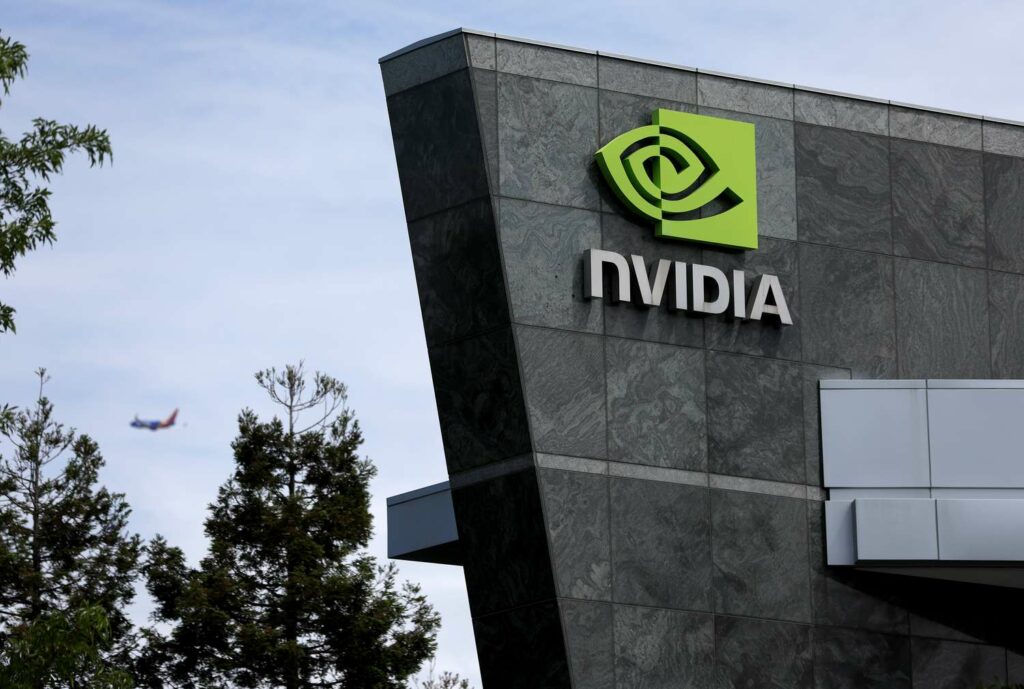When it comes to computer gaming software and hardware, like computer chips, and Graphics Processing Units (Or Graphics cards) GPU, Nvidia is undoubtedly at the top of the game. When talking about high-end performing gaming graphics hardware, Nvidia is the most popular, and the most performing. They have almost 80% of the worldwide market share in GPU semiconductor chips as of 2023. Nvidia produces external and internal GPU devices, which can be found in most gaming brands like Dell Alienware, Razer, and other gaming laptops. The best part is that they keep improving and advancing in the modern tech world of AI
As you already know, Artificial Intelligence technology is being incorporated into different platforms. Nvidia has always been incorporating AI into the gaming world. With one of their regional office in the heart of Austin, Texas, the future of gaming and AI is brighter than we expected. Let’s have a look at the AI prowess of Nvidia and what’s coming shortly concerning Nvidia AI in the gaming industry and others.
NVIDIA: Brief History of the Gaming and AI Tech Company
Nvidia is a technology company headquartered in the United States that principally manufactures and distributes graphics processing units (GPUs) for use in professional and video games and chip systems for autos and robotics. Jensen Huang founded NVIDIA in 1993 and has subsequently served as president, CEO, and board member. Its headquarters are in Santa Clara, California, but it also has regional offices in Austin, Texas.
They specialize in graphics processing technologies for desktop computers, laptops, tablets, and smartphones. NVIDIA has been at the forefront of accelerated computing since its inception. Public businesses and individual investors own 56.29% of the company’s stock, while insiders own 4.03% and institutional investors own 39.69%. Even more amazing is the fact that three of Nvidia’s major customers—Amazon, Microsoft, and Google—have in-house teams that design specialized chips for sophisticated data center applications.

Notable companies in the AI technology area have picked them as their AI chip and processor partners. The company is the go-to company for AI development teams all around the world trying to incorporate AI into their present products since they provide revolutionary ‘native AI’ services for GPUs and AI software development kits.
Nvidia and AI: How have they contributed to the World of AI?
Nvidia dominates the graphics processing unit (GPU) industry, having joined it in 1999 with the GeForce 256. Despite a recent decrease, Nvidia generated more than $9 billion in gaming revenue last year. Regardless, they have a transformative influence on the area of artificial intelligence. Their primary AI chip, which runs the popular ChatGPT, is one of their most notable contributions to the AI community.
Typically, NVIDIA AI innovations focus on partners who provide clients with a full array of cloud-native AI and data analytics containers, including pre-trained models. These solutions are verified, managed, and optimized to speed up AI development and production in several scenarios, such as public clouds, enterprise data centers, and edge computing.
These companies have successfully developed and deployed high-performance AI solutions that have improved the functionality, security, and reliability of their products and services by combining NVIDIA’s GPU technology with their expertise.
Their partnership with companies such as Toyota, Audi, and Volkswagen has resulted in AI-based autonomous driving (Drive Chauffeur) solutions that employ computer vision, machine learning, and sensor fusion. The integration improved safety and driving pleasure by improving the car’s perception and responsiveness to its surroundings.
More on AI: Top 10 Artificial intelligent AI tools and platforms in 2023
NVIDIA’s robotics partnerships with companies like Baidu and Zoox have led to the development of AI-powered robots capable of a variety of tasks, including object recognition, manipulation, and navigation. These enable the robots to learn new abilities and adapt to various activities and environments.
They also work with companies like Microsoft and Mercedes-Benz in the smart city sector has led to the development of AI-powered solutions for energy efficiency, public safety, and traffic control. Analyzing and optimizing urban infrastructure contributes to improving citizens’ quality of life.
Nvidia Application of AI in Gaming
Since joining the artificial intelligence space, NVIDIA has led the way in innovation and made significant advancements. Deep learning algorithms were accelerated by the company’s GeForce and Quadro series in particular, and since then, it has dominated the GPU accelerator industry. With state-of-the-art artificial intelligence (AI) capabilities, NVIDIA’s GeForce RTX series of graphics processing units (GPUs) delivers a breakthrough gaming experience. These GPUs combine AI-accelerated ray tracing, AI-enhanced anti-aliasing, and AI-optimized graphics settings to deliver unparalleled realism, fluidity, and performance.
NVIDIA has solidified its position, particularly in artificial intelligence applications, with the CUDA platform, which makes GPUs suitable for parallel computing and allows them to be used for general-purpose processing. It uses a collection of frameworks and technologies created specifically for machine learning, deep learning, and HPC.

Furthermore, NVIDIA’s DGX systems offer AI platforms that combine robust GPUs, effective libraries, and deep learning algorithms to deliver comprehensive solutions.
Thinking of Getting into AI? Here are the Best Artificial Intelligence (AI) Courses with Free Certifications
Picture-perfect lighting and shadows are made possible via ray tracing, a technique that simulates the behavior of light in actual space and is accelerated by the GPU’s AI units. Compared to conventional methods, which occasionally provide a “staircase” or “jagged” appearance. The AI-enhanced anti-aliasing system of the RTX series provides a more fluid and realistic visual experience.
GPU AI optimizes game graphics, considering resolution, frame rate, and quality for an enhanced gaming experience. You will get the best gaming experience conceivable with no performance lag or visual degradation.
Nvidia Future in AI and Gaming
With artificial intelligence (AI) gaining popularity, NVIDIA, which has led the gaming industry for decades, is well-positioned to continue shaping the path of gaming. NVIDIA will probably continue to set the standard in AI and gaming in the following ways:
DLSS Technology
Deep Learning Super Sampling (DLSS) is one such application. DLSS utilizes artificial intelligence (AI) and machine learning to quickly improve low-resolution pictures, resulting in visually stunning graphics without losing performance. AI trained on high-quality images intelligently upscales lower-resolution pictures with reduced GPU resource consumption.
Ray Tracing Enhancement
AI-driven ray tracing displays NVIDIA’s commitment to gaming realism. Realistic lighting, reflections, and shadows are created in games using AI-enhanced ray tracing techniques. AI methods improve ray tracing’s realism and efficiency, resulting in a more engaging gaming experience.
Reflex Low Latency Technology
NVIDIA developed Reflex Low Latency Technology to address latency concerns. AI minimizes system latency, swiftly translating player inputs into on-screen actions for optimal responsiveness. Reflex provides players with a competitive advantage by increasing the responsiveness of compatible games using AI algorithms.
AI-Driven Physics Simulation
Their technological advances are now used in AI-driven physics simulations. Machine learning models can help make game physics simulations more dynamic and responsive. Realistic item responses to in-game activities create a more immersive and engaging gaming experience.
GameGAN for Game Design
The GameGAN enables the study of AI in the field of game design. This technology makes use of Generative Adversarial Networks (GANs) to generate gaming settings. GameGAN generates new, unique levels on its own by using what it learns from other games. This demonstrates how AI may be used to automate some procedures in game development.
NVIDIA Omniverse
NVIDIA Omniverse for Cooperative Game Development: NVIDIA Omniverse provides a platform for collaborative 3D modeling and rendering that is not confined to gaming. AI-powered simulations may be used by game developers to generate realistic locales and scenarios, speeding up the game production process.
Take Away
NVIDIA, a gaming industry behemoth, not only dominates the GPU market but also leads in AI innovation. NVIDIA changes gaming experiences with technologies like DLSS, ray tracing, and Reflex. The future seems promising, with growing DLSS technology, superior AI-enhanced visuals, and collaborative game production via Omniverse. As AI grows more prevalent, NVIDIA’s history endures, crafting immersive gaming worlds and pushing the limits of possible possibilities. The combination of AI and gaming under NVIDIA’s influence offers an exciting and visually stunning future for gamers worldwide.

